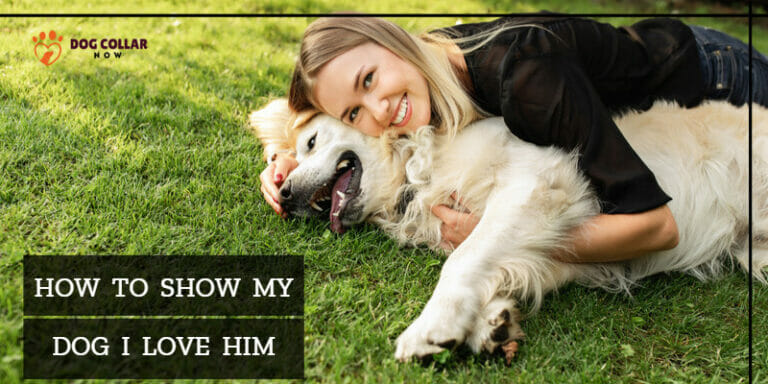Can I Pet That Dog?: What Research Says About Petting Dogs

We’ve all been there. Walking down the street, in a park, or at a friend’s house, and our eyes meet those of a beautiful dog. The urge is almost automatic, a question bubbling up inside us: “Can I pet that dog?” It’s a universal sentiment that binds dog lovers worldwide, but it’s not always as simple as reaching out.
Research indicates that while petting dogs can offer many benefits to humans, it’s essential to approach the act with knowledge and respect. Not every dog reacts the same way to being approached or touched, and understanding this is crucial for the well-being of both the person and the dog.
Petting a dog is not an easy job. I’ve discussed some important factors that you’ve to keep in mind before petting a dog. So let’s study them to save time and effort and also enjoy petting the right dog!
The Human-Dog Bond: A Timeless Affection
The bond between humans and dogs is ancient and profound. Archaeological evidence suggests that dogs were domesticated from wolves as early as 20,000 to 40,000 years ago, making them one of the first animals to live alongside humans.
This longstanding relationship is rooted in mutual benefits; dogs offered protection, hunting assistance, and companionship, while humans provided food, shelter, and care.
Over the millennia, this bond has only deepened. Today, dogs are celebrated not just as working animals but as cherished family members. Their ability to understand human emotions, combined with their unmatched loyalty, cements them as “man’s best friend.”
This unique connection is further solidified every time a human asks, “Can I pet that dog?” and extends a hand in friendship.
Psychological Benefits for Humans: More Than Just a Friend
Dogs have a unique way of touching human lives. When we reach out to pet them, it’s not just a physical connection but an emotional one as well.
Research shows that this simple act can lower stress levels. The mere touch, the rhythmic stroking of their fur, leads to decreased cortisol, our body’s primary stress hormone.
But it doesn’t end there. Petting a dog sparks the release of serotonin and dopamine, neurotransmitters associated with happiness and pleasure. This uplifts our mood, making us feel more at ease and content.
Beyond the individual, dogs also promote social interactions, turning brief encounters into lasting friendships, and fostering a sense of belonging in communities.
Physiological Responses in Dogs
Dogs, like humans, exhibit certain physiological responses when they feel comfortable or distressed. Understanding these responses can help us ensure a positive experience for both the dog and the person.
Relaxation Indicators
When dogs are relaxed and at ease, it’s often evident in their physiological responses. Research has shown that dogs, when petted in a familiar and comfortable environment, display decreased heart rates. Additionally, the levels of stress hormones, such as cortisol, are reduced, signifying relaxation and contentment.
Positive Behavioral Responses
A dog’s behavior can offer clear cues about its feelings. Tail wagging, especially if done in a relaxed manner, indicates happiness. A calm posture, with eyes half-closed and ears in a neutral position, signals contentment. Other signs of enjoyment might include leaning into the touch or nudging a hand for more petting.
Variability Among Dogs
No two dogs are the same. While one might revel in belly rubs, another might be more reserved. Factors such as breed, age, health, and individual temperament play a role in how a dog reacts to petting. It’s essential to approach each dog as an individual and be attentive to its unique preferences and comfort zones.
Factors Influencing a Positive Petting Experience
The experience of petting a dog is influenced by various factors. Recognizing these can ensure a joyful experience for both parties.
Familiarity with the Human
Dogs often display different reactions based on their familiarity with the person. A known human might be greeted with enthusiastic tail wags, while a stranger might be met with caution. Research suggests that dogs feel more at ease and show more positive physiological responses when petted by familiar individuals.
Petting Techniques
Dogs have preferences about where and how they’re touched. Common favorite spots include the base of the tail, behind the ears, and the chest. However, areas like the paws or belly might be sensitive for some dogs. Gentle, rhythmic strokes are often preferred over rough or erratic petting. It’s crucial to observe the dog’s reaction and adjust accordingly.
Dog’s Past Experiences
A dog’s history profoundly affects its reaction to petting. Dogs with positive past interactions might be more open and trusting, while those with traumatic experiences could be more reserved or fearful. Always approach with care and patience, allowing the dog to set the pace.
When Not to Pet a Dog
Knowing when to refrain from petting is as important as knowing how to pet.
Reading Dog Body Language
Recognising signs of stress, fear, or aggression is crucial. Watch for raised hackles, bared teeth, or a stiff posture. Growling, intense staring, or retreating are clear indicators that the dog isn’t comfortable.
Situational Awareness
Certain situations aren’t ideal for petting. Approaching a dog when it’s eating, guarding its territory, sleeping, or with its puppies can be risky. Always assess the situation and err on the side of caution.
Importance of Asking the Owner
Never approach an unfamiliar dog without the owner’s consent. They know their pet best and can provide guidance on whether it’s a good time to interact.
Final Thoughts
The act of petting a dog isn’t just beneficial for humans; it can be a delightful experience for dogs too. However, understanding and respecting their boundaries is paramount. By ensuring a positive experience, we strengthen the age-old bond between humans and their loyal canine companions.
FAQs
Why do some dogs not like to be petted?
Every dog has its own temperament and past experiences that influence its comfort with touch.
How can I tell if a dog is stressed or uncomfortable when I approach it?
Look for signs like raised hackles, stiff posture, or growling; these often indicate discomfort.
Is it true that petting a dog can reduce my stress levels?
Yes, petting a dog has been shown to decrease cortisol, a stress hormone, in humans.
Are certain dog breeds more receptive to petting than others?
While individual temperament plays a significant role, some breeds may naturally be more sociable or reserved.
Should I always ask an owner before petting their dog?
Absolutely, always seek the owner’s permission to ensure safety and respect boundaries.






